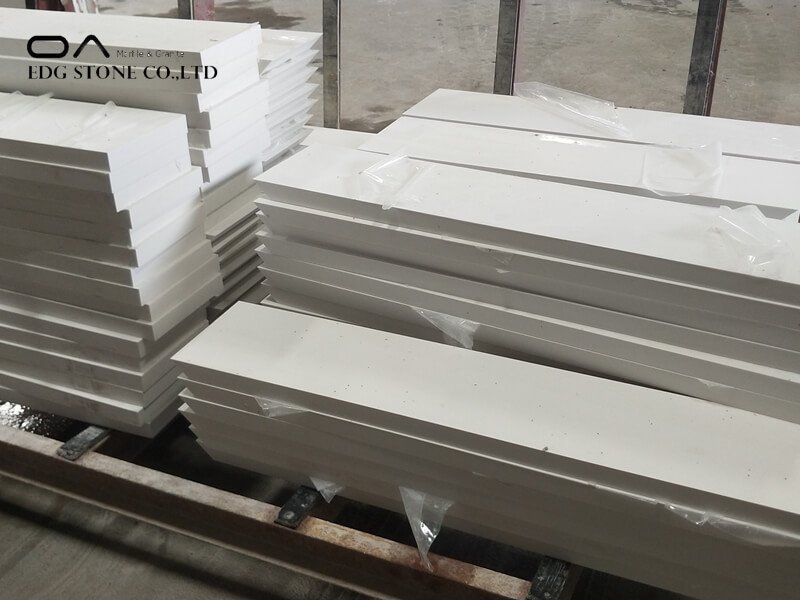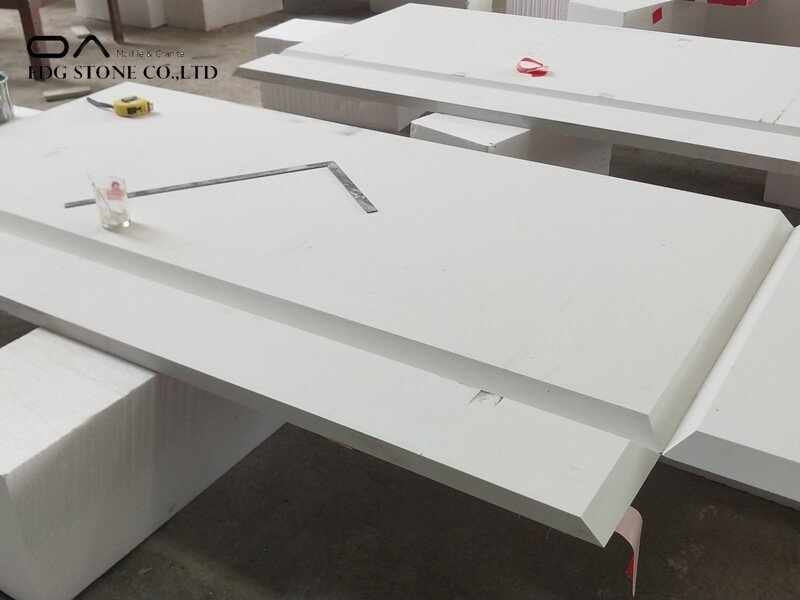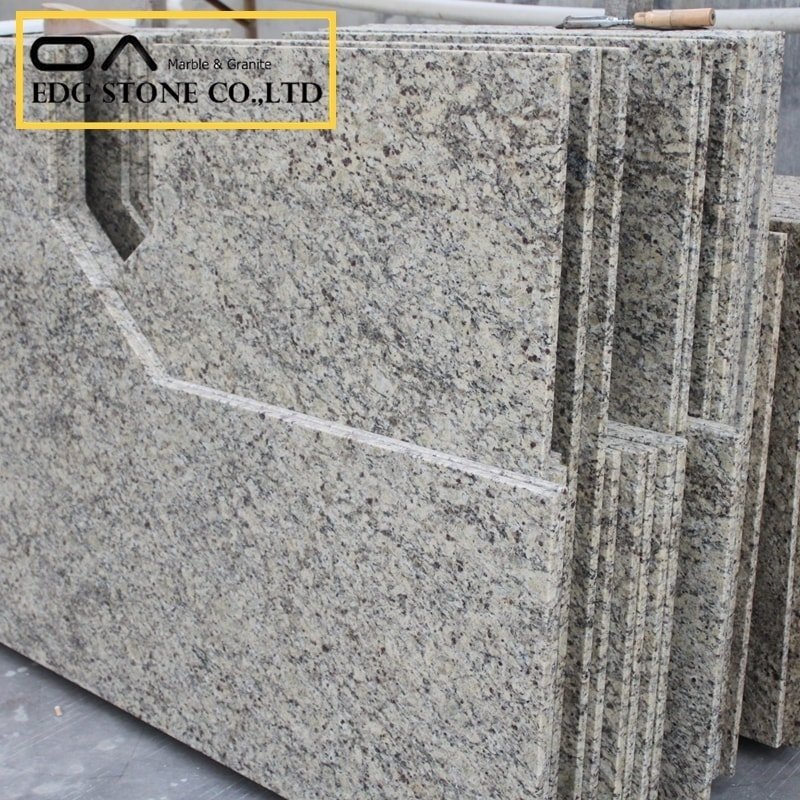In the specific application of quartz stone, it is unavoidable to splice two pieces or even multiple pieces. Since the hardness of the quartz stone plate is as high as Mohs hardness level 7, after splicing, in order to make the whole seem integrated, it will test the quartz stone manufacturers and processing masters. technology. For specific operations, we can follow the methods.
Perform mutual inspection on all large and small materials. The contents of the mutual inspection include the direction of the skirt, the position of the edging, the direction of the bevel, the length and width of the skirt and the small material, and whether there is any joint between the panels Chromatic aberration. Before making it, you must understand the edge structure and small material specifications of the countertop, and be aware of it, and don’t stick the wrong edge.
Place the bottom surface of the panel up on the workbench, check the flatness of the surface to be bonded, wipe off the stained area with a cleaning ball, rinse with water, use an air gun or dry cloth to clean and dry the surface to be bonded. According to the thickness of the countertop, choose the skirt reinforcement strip of the corresponding height (the height of the reinforcement strip is h=h-d), and evenly apply the color marble glue to bond the reinforcement strip inward to the bottom of the countertop, and the outer edge of the reinforcement strip and the panel The hypotenuse is flush. Clamp it with a g-type clamp or a-type clamp to clear the remaining glue. Evenly apply the color marble glue to the inclined surface of the panel and the side of the reinforcing strip. Place the inclined surface of the skirt on the glue and rub left and right to squeeze out the air. Clamp the skirt and the panel with an F-clamp, and use a rubber hammer to moderate The strength of the light tap is that the skirt is flush with the corner of the panel, and a clip is clamped every 100-150mm. Then clamp the skirt and the reinforcing plate with A-type clamps between every two F-type clamps to clean up the residual glue. Stick a flat light-facing outward slat flush with the bottom of the reinforcement class to make the width of the skirt reach 65mm, and fix it with clips every 200mm.
Place the bottom of the panel up on the workbench, check the flatness of the surface to be bonded, wipe off the stained area with a cleaning ball, rinse with water, use an air gun or dry cloth to clean and dry the surface to be bonded. According to the thickness of the countertop, select a skirt reinforcement block of the corresponding height (the specification of the reinforcement block is 35×h, h=h-2d), and evenly apply the color marble glue to bond the reinforcement block to the bottom of the countertop every 200mm. The outer edge of the reinforcement box is flush with the hypotenuse of the panel. Clamp it with a g-type clamp or a-type clamp to clear the remaining glue. Evenly spread the color marble glue on the inclined surface of the panel and the side of the reinforcing strip. Place the inclined surface of the skirt on the glue and rub it left and right to squeeze out the air. Use an F-clamp to clamp the skirt and the panel, and use a rubber hammer to moderate Tap with the intensity to make the skirt and the corner of the panel level, and clamp a clip every 100-150mm. Then clamp the skirt and the reinforcement block with a g-clamp between every two f-clamps to clean up the remaining glue. Glue a flat light-facing outward slat flush with the bottom of the reinforcing plate to make the width of the skirt reach 65mm, and fix it with clips every 200mm.
Place the panel ground up on the workbench, check the flatness of the surface to be bonded, wipe off the stained area with a cleaning ball, rinse with water, and clean and dry the surface to be bonded with an air gun or dry cloth. Evenly spread the color marble glue on the inclined surface of the panel and the side of the reinforcement strip, put the inclined surface of the skirt on the glue, and rub it left and right to squeeze out the air. Clamp the skirt and the panel with a-type clamps, and use a rubber hammer to moderate Tap with the intensity to make the skirt and the corner of the panel level, and clamp a clip every 100-150mm. Clean up the remaining glue and enter the next process after 15 minutes.









